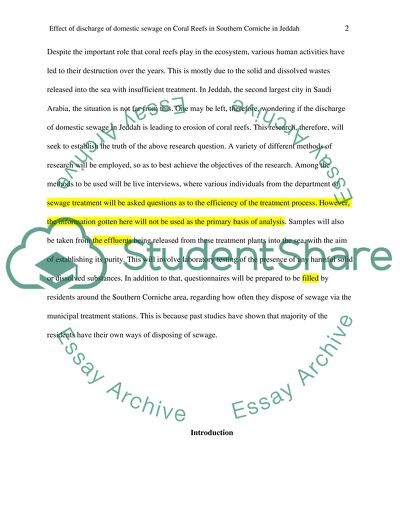Cite this document
(“Effect Of Discharge Of Domestic Sewage On Coral Reefs Research Proposal”, n.d.)
Retrieved from https://studentshare.org/environmental-studies/1668688-is-the-discharge-of-domestic-sewage-due-to-increased-population-in-southern-corniche-in-jeddah-leading-to-the-erosion-of-coral-reefs
Retrieved from https://studentshare.org/environmental-studies/1668688-is-the-discharge-of-domestic-sewage-due-to-increased-population-in-southern-corniche-in-jeddah-leading-to-the-erosion-of-coral-reefs
(Effect Of Discharge Of Domestic Sewage On Coral Reefs Research Proposal)
https://studentshare.org/environmental-studies/1668688-is-the-discharge-of-domestic-sewage-due-to-increased-population-in-southern-corniche-in-jeddah-leading-to-the-erosion-of-coral-reefs.
https://studentshare.org/environmental-studies/1668688-is-the-discharge-of-domestic-sewage-due-to-increased-population-in-southern-corniche-in-jeddah-leading-to-the-erosion-of-coral-reefs.
“Effect Of Discharge Of Domestic Sewage On Coral Reefs Research Proposal”, n.d. https://studentshare.org/environmental-studies/1668688-is-the-discharge-of-domestic-sewage-due-to-increased-population-in-southern-corniche-in-jeddah-leading-to-the-erosion-of-coral-reefs.


